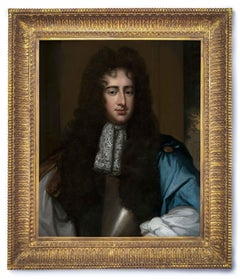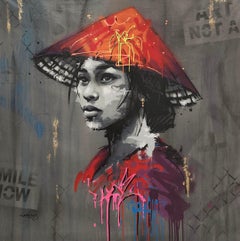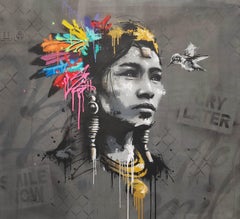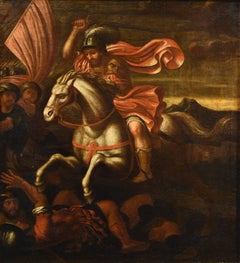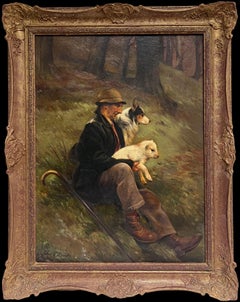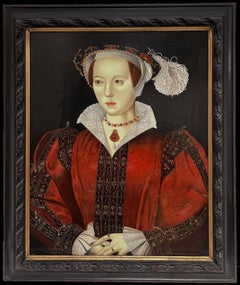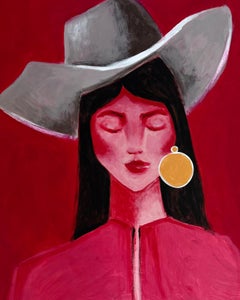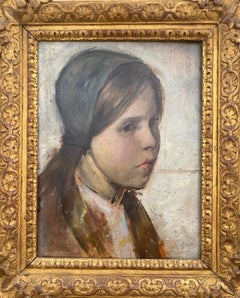Portrait Paintings
1980s Modern Portrait Paintings
Canvas, Acrylic, Board
1980s Modern Portrait Paintings
Acrylic, Board
Mid-20th Century English School Portrait Paintings
Oil
20th Century English School Portrait Paintings
Oil
2010s Contemporary Portrait Paintings
Canvas, Acrylic
1880s Impressionist Portrait Paintings
Oil, Board
Artist Comments
A stylized portrait depicts a girl using bold blocks of color. Her face appears simplified and almost sculptural, rendered in muted tones of beige, grey, and pi...
21st Century and Contemporary Contemporary Portrait Paintings
Acrylic
21st Century and Contemporary Contemporary Portrait Paintings
Canvas, Acrylic
2010s Expressionist Portrait Paintings
Canvas, Acrylic
Late 19th Century Other Art Style Portrait Paintings
Oil, Wood Panel
1980s Modern Portrait Paintings
Canvas, Acrylic, Board
21st Century and Contemporary Contemporary Portrait Paintings
Canvas, Mixed Media, Acrylic
Early 19th Century Victorian Portrait Paintings
Oil, Board
1980s Modern Portrait Paintings
Canvas, Acrylic, Board
Artist Comments
A mother holds her baby tenderly, her gentle smile reflecting their bond. Rich red tones and intricate clothing details stand out against the dark background. P...
21st Century and Contemporary Realist Portrait Paintings
Oil
Late 18th Century English School Portrait Paintings
Oil
21st Century and Contemporary Contemporary Portrait Paintings
Canvas, Oil
Mid-20th Century Old Masters Portrait Paintings
Oil
Artist Comments
Subways are a melting pot of culture. The station on 14th Street offers an ideal setting to observe this diversity and engage in people-watching. On cold days, one can often see homeless alcoholics among the fashion models, Wall Street executives, and commuters from all over Manhattan waiting for trains.Painted with bright colors and in the style of David Hockney and Edward Hopper, the scene depicts artist Leroy Burt's impression of a New York City subway station...
21st Century and Contemporary Pop Art Portrait Paintings
Acrylic
19th Century Old Masters Portrait Paintings
Oil
21st Century and Contemporary Surrealist Portrait Paintings
Canvas, Oil, Acrylic
1990s Portrait Paintings
Oil
21st Century and Contemporary Contemporary Portrait Paintings
Canvas, Acrylic
21st Century and Contemporary Expressionist Portrait Paintings
Oil, Canvas, Acrylic
Late 19th Century Victorian Portrait Paintings
Oil
21st Century and Contemporary Expressionist Portrait Paintings
Oil, Canvas, Acrylic
1880s French School Portrait Paintings
Oil
Late 19th Century Victorian Portrait Paintings
Oil
21st Century and Contemporary Expressionist Portrait Paintings
Canvas, Acrylic
1880s Victorian Portrait Paintings
Oil, Board
Mid-19th Century Victorian Portrait Paintings
Oil
21st Century and Contemporary Vienna Secession Portrait Paintings
Canvas, Oil, Acrylic
1810s Portrait Paintings
Stainless Steel
1920s Portrait Paintings
Oil, Board
21st Century and Contemporary Realist Portrait Paintings
Cotton Canvas, Acrylic
Late 19th Century Pre-Raphaelite Portrait Paintings
Canvas, Oil
21st Century and Contemporary Contemporary Portrait Paintings
Canvas, Acrylic
1830s Old Masters Portrait Paintings
Oil
21st Century and Contemporary Renaissance Portrait Paintings
Wood, Tempera, Egg Tempera, Digital
2010s Abstract Expressionist Portrait Paintings
Paper, Acrylic
2010s Pop Art Portrait Paintings
Permanent Marker
1930s Post-Impressionist Portrait Paintings
Oil
Artist Comments
A surreal scene offers two possibilities. First, it is a realistic rendering of a man in a Big Bird costume, slouched at a dimly lit bar among solitary drinkers...
21st Century and Contemporary Pop Art Portrait Paintings
Oil
21st Century and Contemporary Contemporary Portrait Paintings
Canvas, Mixed Media, Oil, Acrylic
Mid-19th Century Portrait Paintings
Canvas, Oil
21st Century and Contemporary Expressionist Portrait Paintings
Canvas, Acrylic
Mid-20th Century Modern Portrait Paintings
Canvas, Oil
20th Century Portrait Paintings
Oil
1950s Impressionist Portrait Paintings
Canvas, Oil
1980s Modern Portrait Paintings
Canvas, Acrylic, Board
Late 19th Century Victorian Portrait Paintings
Oil
Mid-20th Century Expressionist Portrait Paintings
Oil
2010s Contemporary Portrait Paintings
Canvas, Acrylic
2010s Pop Art Portrait Paintings
Permanent Marker
Early 19th Century Portrait Paintings
Canvas, Oil
Artist Comments
A young woman reclines on a bright red inner tube, floating in a shimmering aquamarine pool. Her sunglasses, floral bikini, and the lyrical ripples on the water...
21st Century and Contemporary Pop Art Portrait Paintings
Oil
1880s Post-Impressionist Portrait Paintings
Paper, Watercolor
Late 20th Century Modern Portrait Paintings
Canvas, Oil, Board
Artist Comments
A man and his dog drive through a vast, open landscape. There’s a zero percent chance their trip won’t involve beef jerky. This sun-drenched scene captures ...
21st Century and Contemporary Pop Art Portrait Paintings
Oil
21st Century and Contemporary Contemporary Portrait Paintings
Canvas, Acrylic, Charcoal
Portrait Paintings for Sale on 1stDibs
An elegant and sophisticated decorative touch in any living space, portrait paintings have remained popular throughout the years and are widely loved pieces of art for display in many homes today.
Portrait paintings are at least as old as ancient Egypt, where realistic, lifelike depictions of the recently deceased — commonly known as “mummy portraits” — were painted on wooden panels and affixed to mummies as part of the burial tradition.
For centuries, painters have used portraiture as a means of expressing a subject’s nobility, societal status and authority. Portraits were given as gifts in Renaissance Europe, and a portrait artist might have been commissioned to help mark a significant occasion such as a wedding or a promotion to high office. Prior to the advent of photography, which eventually replaced painted portraits as a quicker and more efficient way of capturing a person’s essence, the subject of a portrait had to sit for hours until the painter had finished. And during the 18th century in particular, if an artist commissioned for a portrait struggled with how to adequately memorialize and capture a subject’s likeness, sometimes a portrait painting wasn’t completed for up to a year.
Whether it’s part of the gallery-style approach to your living-room or dining-room walls or merely inspiration as you devise an eye-grabbing color scheme in your home, a portrait painting is a timeless decorative object for any interior. A landscape painting or sculpture might give you the kind of insight into a specific region of the world or a different culture that you can ascertain only through art. Similarly, when you take the time to learn about the subject of a portrait painting that you bring into your home — the sitter’s history, the relationship between the sitter and the artist should one exist, the story of how the portrait came to be — that work can become intensely personal in addition to its place as an object for an art-hungry corner of your apartment or house.
On 1stDibs, visit a vast collection of famous portrait paintings or works by emerging artists. Search by medium to find the right portrait paintings for your home in oil paint, synthetic resin paint and more. Find portrait paintings in a variety of styles, too, including contemporary, Impressionist and Pop art, or search by artist to find unique works created by painters such as Mark Beard, Steve Kaufman and Montse Valdés.
Read More
Cecilia Vicuña Merges Politics, Science and Spirituality in Her Poetic Art
The Chilean creator, who has been living in exile in New York for decades, is having a major moment, receiving the biggest exhibitions, commissions and awards an artist could dream of.
In Christopher Spitzmiller’s New York Homes, His Love of Dogs Is on Full Display
The ceramist, designer and gentleman farmer tells us about the collection of antique dog art he has spread across a New York City apartment and a Greek Revival farmhouse in the Hudson Valley.
This Wiener Werkstätte Master Made Everything into Art
Koloman Moser smashed the conservative conventions of art and design in fin-de-siècle Vienna. On the 100th anniversary of his death, the Austrian designer is being celebrated for his radically modern creations.
